Identifying subspecies of Adult Western Rattlesnakes
(Crotalus oreganus) in California


| Venomous and Potentially Dangerous! | ||
| Usually you can determine the subspecies of a western rattlesnake found in California by looking at where it was found on a range map such as the one below. |
||
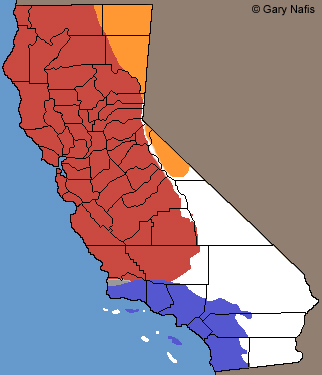 |
||
| Range of Western Rattlesnake - Crotalus oreganus | ||
| Blue: Crotalus oreganus helleri - Southern Pacific Rattlesnake Orange: Crotalus oreganus lutosus - Great Basin Rattlesnake Red: Crotalus oreganus oreganus - Northern Pacific Rattlesnake |
||
| Below are some of the key markings on the three subspecies of Crotalus oreganus that are also supposed to help to differentiate the subspecies (following the texts referenced below) however they are not always conclusive. C. o. lutosus can usually be identified by the light ground color and the light spaces in the dark blotches. The most reliable mark in the majority of C. o. oreganus and C. o. helleri that I have compared is the width of the terminal dark tail ring. |
||
Southern Pacific Rattlesnake - Crotalus oreganus helleri |
||
| The last dark ring by the rattle is at least twice as wide as the preceding bands. (Sometimes this ring is brown or yellowish) |
||
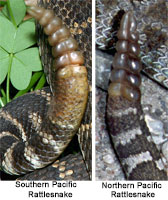 |
||
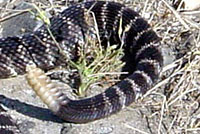 © 2006 Steve Broggie © 2006 Steve Broggie |
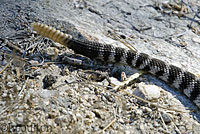 © Koby Poulton © Koby Poulton |
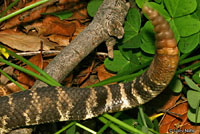 |
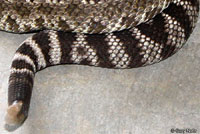 |
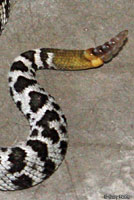 |
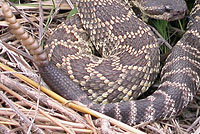 © Chris Gruenwald © Chris Gruenwald |
| Dark blotches on the back and sides of the body transition to bands and tail rings at approximately the last fifth (20 percent) of the body length. (Generally there is not much contrast between the dark and light tail rings - but this is not always a great field mark to use.) |
||
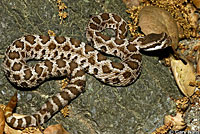 |
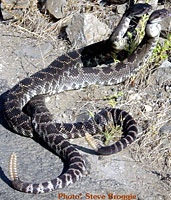 © 2006 Steve Broggie © 2006 Steve Broggie |
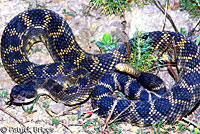 © Patrick Briggs © Patrick Briggs |
| Dorsal and side blotches transition to bands at about the last fifth (20 percent) of the body. |
This is a juvenile snake, but the number of blotches and bands will not change as it ages. The full-body shot here lets you see where the dorsal blotches transition to bands. |
The dorsal and side blotches to transition to bands at about the last fifth (20 percent) of the body. |
Northern Pacific Rattlesnake - Crotalus oreganus oreganus |
||
| The last dark ring by the rattle is not noticeably wider than the preceding bands. |
||
 |
||
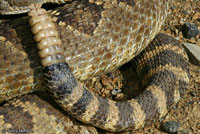 |
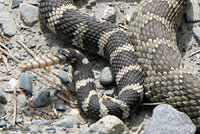 |
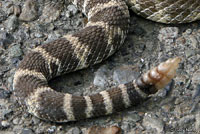 |
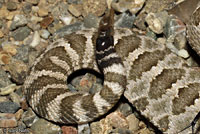 |
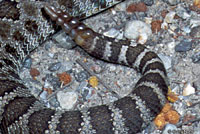 |
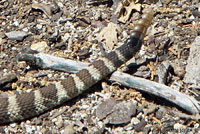 |
| Dark blotches on the back and sides of the body transition to bands and tail rings at approximately the last third (33.33 percent) of the body length. (Generally there is a high-contrast between the dark and light tail rings - but this is not always a great field mark to use.) |
||
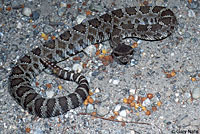 |
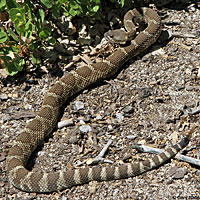 |
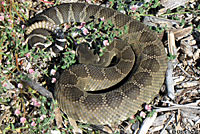 |
Great Basin Rattlesnake - Crotalus oreganus lutosus |
||
The last dark ring by the rattle is a little wider and darker than the preceding bands, often black. |
||
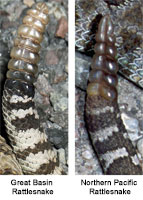 |
||
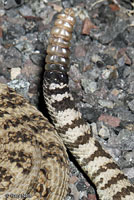 |
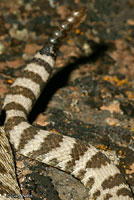 |
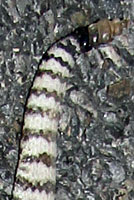 |
| Dark blotches on the back and sides of the body usually have light centers. (Those on C. o. oreganus and C. o. helleri do not.) Ground color is lighter than on other subspecies - light gray, pale yellow, buff, or tan. |
||
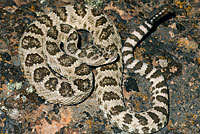 |
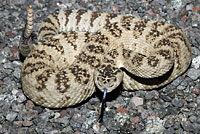 |
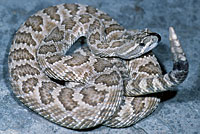 |
| References Klauber, Laurence M. Rattlesnakes. University of California Press. (Abridged from the 1956 two volume Rattlesnakes: Their Habits, Life Histories, and Influence on Mankind.) University of California Press, 1982. Hansen, Robert W. and Shedd, Jackson D. California Amphibians and Reptiles. (Princeton Field Guides.) Princeton University Press, 2025. Stebbins, Robert C., and McGinnis, Samuel M. Field Guide to Amphibians and Reptiles of California: Revised Edition (California Natural History Guides) University of California Press, 2012. Stebbins, Robert C. California Amphibians and Reptiles. The University of California Press, 1972. Flaxington, William C. Amphibians and Reptiles of California: Field Observations, Distribution, and Natural History. Fieldnotes Press, Anaheim, California, 2021. Hubbs, Brian R., & Brendan O'Connor. A Guide to the Rattlesnakes and other Venomous Serpents of the United States. Tricolor Books, 2011. Bartlett, R. D. & Patricia P. Bartlett. Guide and Reference to the Snakes of Western North America (North of Mexico) and Hawaii. University Press of Florida, 2009. |
||
Return to the Top
© 2000 -
